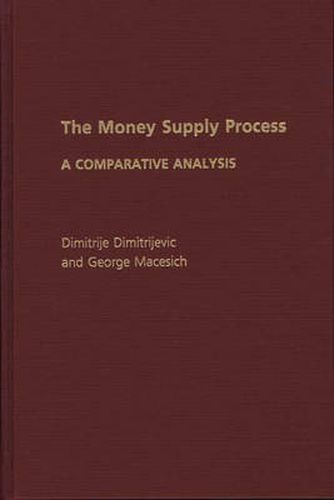Readings Newsletter
Become a Readings Member to make your shopping experience even easier.
Sign in or sign up for free!
You’re not far away from qualifying for FREE standard shipping within Australia
You’ve qualified for FREE standard shipping within Australia
The cart is loading…






This is an international comparative, empirical study of the money supply process (MSP) that involves all of the basic types of economies and institutional economic systems at all levels of economic development. As the authors note at the outset, the highly relative nature of the MSP contributes to wide differences in the MSP in different types of economies. Yet the MSP is one of the most important topics of both monetary theory and monetary practice. The comparative approach adopted here enables the authors to explain the differences that do occur in the MSP across economies and what causes them. By properly defining the general theory and overall monetary theory of MSP, this text offers the reader both a better understanding of the national MSP and a broad framework of possibilities for improving the efficiency of monetary policy. The authors begin by describing their approach to an analysis of the MSP in national economies and the concepts and models used in this analysis. They then explain the classification of economies used in the study and their methodological approach. A separate chapter presents a comparative analysis involving 100 countries of the MSP during the 1978-83 time period. Finally, the authors look at the influence of the balance-of-payments and of domestic institutional sectors on the MSP. Their concluding chapters summarize their findings and point the way to further research in this area.
$9.00 standard shipping within Australia
FREE standard shipping within Australia for orders over $100.00
Express & International shipping calculated at checkout
This is an international comparative, empirical study of the money supply process (MSP) that involves all of the basic types of economies and institutional economic systems at all levels of economic development. As the authors note at the outset, the highly relative nature of the MSP contributes to wide differences in the MSP in different types of economies. Yet the MSP is one of the most important topics of both monetary theory and monetary practice. The comparative approach adopted here enables the authors to explain the differences that do occur in the MSP across economies and what causes them. By properly defining the general theory and overall monetary theory of MSP, this text offers the reader both a better understanding of the national MSP and a broad framework of possibilities for improving the efficiency of monetary policy. The authors begin by describing their approach to an analysis of the MSP in national economies and the concepts and models used in this analysis. They then explain the classification of economies used in the study and their methodological approach. A separate chapter presents a comparative analysis involving 100 countries of the MSP during the 1978-83 time period. Finally, the authors look at the influence of the balance-of-payments and of domestic institutional sectors on the MSP. Their concluding chapters summarize their findings and point the way to further research in this area.